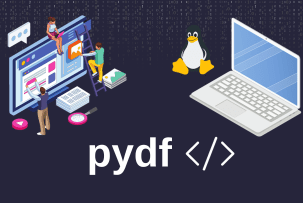How to Secure VPS
11:05, 24.04.2019
Virtual Private Server is an ideal choice for a variety of businesses, mainly because of its reliability, scalability, and price. VPS is rather secure when compared with shared hosting, but there are still some potential risks. In this article, we will discuss common vulnerabilities of VPS and how to secure your server from potential threats.
Evaluation of VPS Security
VPS is a hosting solution that functions on an actual physical server. The space on this machine is divided between the users with the secure virtualization technology that guarantees great isolation of the resources. Due to the scalability of VPS, clients can easily adjust resources depending on the business needs, it is possible to upgrade as well as downgrade the current plan. But what about the security of such a server?
When comparing VPS with the shared hosting type, the first one is way more isolated, and other users are not influencing the functionality of the server. However, a Virtual Private Server is less secure than a dedicated server, because you are not the only one on the physical machine as with dedicated hosting.
Probably the main risks of the VPS are connected with the hypervisor. Via this software, it is possible to come through the isolation mechanisms. Luckily, proper management and configuration can significantly minimize the risks connected with hypervisors. For instance, a couple of simple recommendations such as regular software updates, firewalls, and port disabling can significantly influence the security of the server.
More often than not, hosting providers include a couple of protection mechanisms for all the VPS plans. Among the most common security features, we can stand out as protection against DDoS attacks, firewalls, SSL certificates, and also some types of threat detection. In addition to the existing methods of protection, there are a diversity of other ways to protect the security of your hosting solution.
Common Vulnerabilities in VPS
Cyber attacks and other types of threats are improving all the time in order to reach a certain goal. That’s why, it is crucial to understand the newest methods of attacks and that will help to deal with them or at least minimize the possible risks. Let’s start with a discussion of the major VPS vulnerabilities.
DDoS Attack Strategies Insight
DDoS attacks are risky for all the hosting solutions including VPS plans. This type of threat is created to overwhelm the server with a huge amount of instant traffic. Due to such unauthorized activity, the server might become inaccessible, which can lead to the crash of the server, or influence the performance of your website. As a rule, the aim of this attack is to influence the server activity, but not to steal the sensitive information.
Protection Against Malware Infiltration
Malware infiltration is another type of VPS threat that works by installing malicious software into the machine. This act is done for a variety of purposes specifically such as deleting important sensitive information, stealing data with the aim to use it for some illegal purposes, and more. The most risky thing about the malware is that such type of software can function on your VPS for a significant time without identification. Attackers can steal sensitive information and influence the activity of the server without any specific signals that it is done by a cybercriminal. That is dangerous and can lead to serious consequences for your business.
Dealing with Software and Cloud Vulnerabilities
One more type of unauthorized activity is connected with cloud and software vulnerabilities. This method is considered to be more challenging because there is a necessity to find outdated software or other system vulnerabilities. Once these weaknesses are identified, it is possible to access the server and damage its activity.
Risk Reduction from Port Scanning
Opened ports are huge vulnerabilities for the server in case they are not secured in the right way. Lots of attackers can access sensitive information and directly influence the system so that can be really harmful for the server.
How to Safe Your VPS: 10 Essential Measures
Here, we will share 10 essential measures to protect your VPS from a variety of threats that we have already discussed.
1. Ensuring Timely System Updates
Software and system updates are important not only because of the new features but mainly for security reasons. VPS can be more secure when regular updates are done because bugs and vulnerabilities are usually detected and solved with time.
Except for security reasons, regular system updates are crucial because they guarantee smooth functioning and better performance characteristics. Even the smallest and most unnecessary update of the system with one new feature can potentially be more important to the whole server's functioning. Don’t skip any strengthening of the system and new features, because it might save you from potential threats and huge risks of data loss.
2. Deploying Effective Firewall Protection
One more step for the protection of VPS against various attacks is the usage of firewalls. This is like the initial method of protection against online threats. If you need a great tool then CSF and APF can perfectly help with monitoring suspicious traffic activity. With the detection of unusual online actions, it is much easier to prevent some risks or totally stop them.
Those who use Linux can try Firewalld. This customizable option can significantly influence the mechanisms of server protection.
The alert function and detection of the logs can help to identify possible threats right away so that a proper mechanism of protection can be implemented whenever it is needed.
3. Closing Unused Ports for Enhanced Security
All the open ports on the used server are risky parts of the system through which unauthorized activity can be done. The most professional decision for the users of VPS is to close all the ports that aren’t used. By doing so, you are definitely strengthening the security of your server and improving the protection of your data.
Except for security reasons, by doing so you are also influencing the performance characteristics of the hosting solution. The load of the physical machine can be greatly minimized by closing the ports. Also, once you have fewer open ports, you can easily identify where a potential attack coming through.
4. Modifying the Default SSH Port for Added Defense
Usually, port 22 is the main vulnerable part of the server via which lots of attackers try to reach the needed information. To add an additional layer of protection for this default port, you should switch it to the custom one. By acting in such a way, your server will be much harder to attack because of the unpredictability of such a decision.
Most hackers use standard tactics and in most cases automated processes for reaching out to the physical servers. That’s why such an unexpected decision can greatly influence security and unauthorized activity.
5. Integrating Robust Malware Detection Tools
Servers are regularly attacked via malware mechanisms so that such risks can be also minimized. The most effective instrument in this way is the integration of specific detection tools. Among a huge diversity of options, the most practical ones are considered to be Maldet or ClamAV. The regular scanning activity of the system guarantees that malware attempts to attack can be minimized.
You will be immediately notified when such a threat will be detected. Moreover, via tools you can get access to detailed reports which can be helpful for the future improvement of the security of your server. Automated functioning of such apps can make the process much easier and less time-consuming.
6. Enhancing Security with SSH Key Authentication
One more effective method of security improvement on VPS can be connected with the SSH key. The usage of the standard password for entering the system can be risky for a variety of reasons. In most cases, even strong passwords can be vulnerable because of the attackers’ unauthorized activity. To improve security in this area, you can use key authentication.
The decision to use key authentication can significantly minimize the attempts of the attackers to use standard approaches. By doing so, you are significantly strengthening the security of the VPS.
7. Disabling Root Logins to Fortify Access Control
To fortify access control even more, the best decision is the disabling of the root logins. Root access to the server gives entire freedom to the attacker to change whatever is needed in the server activity, steal sensitive data more easily, and much more. In case the root logins are disabled, you can feel much safer. Even if the unauthorized activity is done, the scammer won’t have the desired high access level so the damage to the system can be significantly minimized.
This is the most ideal strategy that can be implemented for the security of your VPS because in such a way you are creating unusual circumstances for the attackers and they will need to waste more time and resources on the reaching of needed information.
8. Restricting User Access for Tightened Security
There are a variety of users who access servers on a daily basis, but not all of them need the same level of access to the system. To minimize the risks of attacks, it is great to restrict user access and have limitations regarding all the security aspects. Once everything is done properly; you can feel much safer about the security of the VPS. For instance, in case the unauthorized activity is already done, you can be sure that the attacker won’t cause the maximum possible damage to the system.
With such a protection approach, the strange activity can be identified way more easily, and you will know where it is coming from in case it occurs. The potential risks become way lower and the surface of the possible damage can be greatly reduced by restricting user access.
9. Implementing Regular Backup Protocols
The implementation of regular backups can be extremely helpful for the protection mechanisms as well as for the quickest recovery. The restoring of the system after the attack might be a time-consuming process and that’s why regular backups should be done for data protection.
The pause of the business website even for a short time frame can significantly influence the income and what is more seriously impact the reputation. By making automatic backups of sensitive information, you can be sure that the downtime in case of an attack can be minimized.
10. Vigilantly Monitoring Server Logs for Anomalies
The scanning of the logs for potential anomalies is one more helpful approach that can greatly influence the security of VPS. The monitoring should be done regularly to get the best possible results and to safeguard the system properly. Once the strange activity is detected, you can quicker react to the situation and even prevent further consequences.
The most functional tools for scanning the logs are Prometheus (for the visualization and in the long run for better diagnostics of an issue), Kubernetes can be also used for troubleshooting purposes, and Fluentd can be helpful for the detection of unusual activity from such sources as containers, servers, apps, and more.
By regular and proper monitoring of the system, it is possible to reach a couple of goals. First of all, you are understanding the behavior of your client more, you are improving the performance, and of course, you are strengthening the server security.
Conclusion
The security of VPS is a complex approach towards lots of aspects within the server. Regular checks and monitoring should be done for better protection from hacks. It is way better to prevent the attack rather than deal with damaging consequences. So, start implementing simple strategies today and you will see the difference in the long run.


